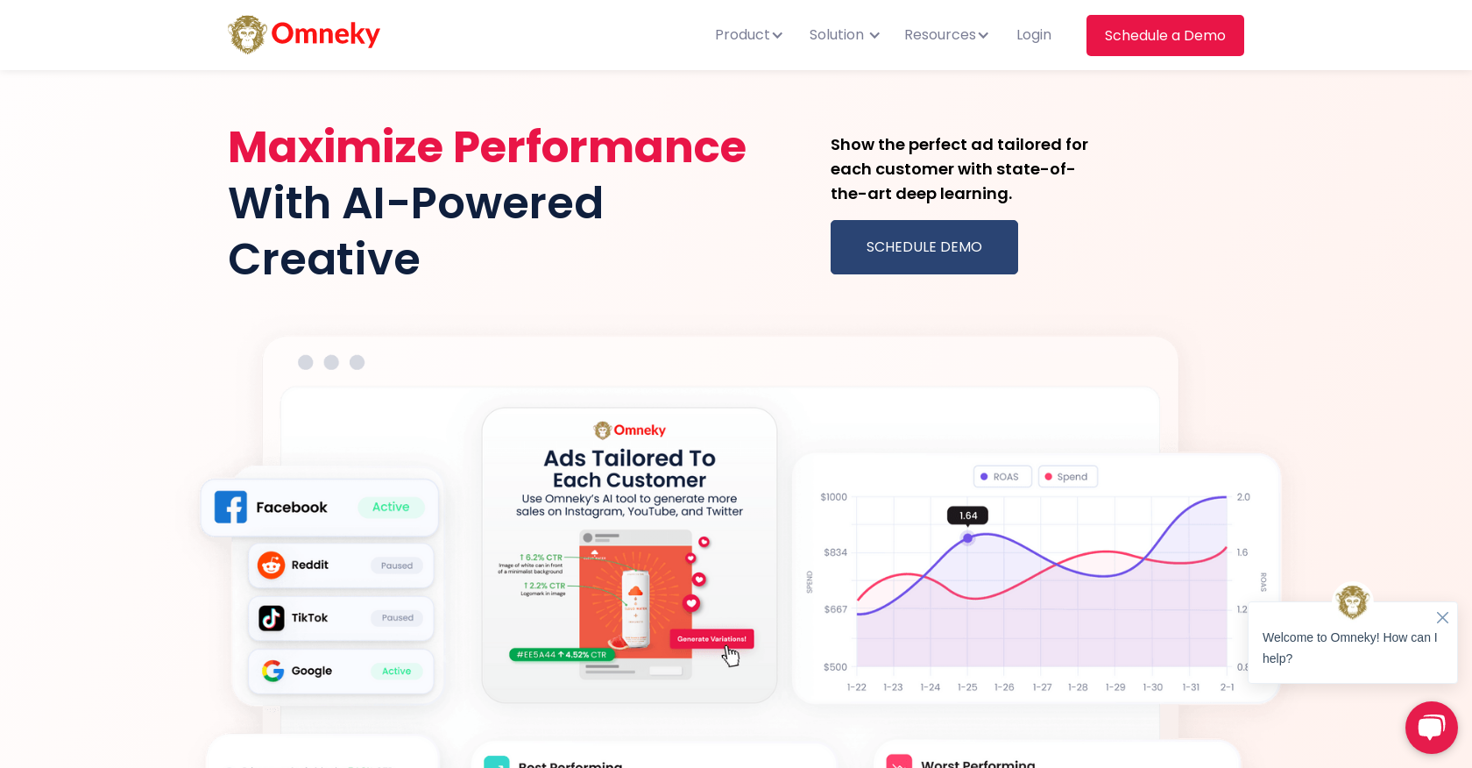
Omneky: Complete Buyer's Guide
Generative AI platform specializing in brand-consistent creative production
Omneky positions itself as a generative AI platform specializing in brand-consistent creative production for cross-channel advertising campaigns. The company differentiates through its Brand LLM technology, which enforces brand consistency by training on guidelines and assets[47][44], and Smart Ads technology that generates on-brand advertisements using generative AI and performance data[46][44].
Market Position & Maturity
Market Standing
Omneky operates within the rapidly expanding generative AI advertising market, which projects growth to $3.39 billion in 2025 with a 24.6% CAGR[1].
Company Maturity
Customer base maturity spans eCommerce (Omiana), FinTech (Thndr), and SaaS (Unlock) organizations, with documented success patterns favoring retail contexts[47][57][53].
Industry Recognition
Industry recognition emerges through customer testimonials and documented case studies rather than formal analyst recognition.
Strategic Partnerships
Strategic partnerships focus on advertising platform integrations rather than formal technology alliances, with native deployment capabilities across major advertising ecosystems[57][46].
Proof of Capabilities
Customer Evidence
Omiana achieved 3.5X ROI through AI-generated creatives, with the eCommerce company reporting 200% year-over-year sales growth using Omneky's personalized ad variants[53].
Quantified Outcomes
Thndr optimized ad performance within 72 hours of onboarding, leveraging AI to analyze creative elements and generate high-converting variants[57].
Case Study Analysis
Häagen-Dazs reported 30% higher conversion rates during 3-week trials, though independent verification is recommended for all vendor-provided ROI claims[52].
Market Validation
Cross-industry validation spans multiple verticals including eCommerce, FinTech, and SaaS organizations[47][57][53].
Competitive Wins
Competitive wins demonstrate advantages over template-focused competitors through Brand LLM technology that maintains brand consistency across generated creative assets[44][47].
AI Technology
Omneky's Brand LLM technology represents its primary technical differentiation, auditing creative assets against brand guidelines to maintain consistency across generated content[44][47].
Architecture
Technical architecture requires admin access to advertising accounts and comprehensive brand asset documentation for optimal Brand LLM training[55].
Primary Competitors
Primary competitors include Google AI and Albert.ai.
Competitive Advantages
Competitive advantages center on Brand LLM technology providing demonstrated advantages in maintaining brand consistency across generated creative assets, differentiating from template-focused competitors like AdCreative.ai[44][47].
Market Positioning
Market positioning targets the specialized segment between template-based generators and fully autonomous campaign management platforms.
Win/Loss Scenarios
Win scenarios favor organizations requiring brand consistency as a critical requirement and cross-channel deployment spanning multiple advertising platforms[44][47]. Loss scenarios include organizations prioritizing ROAS optimization within existing Google ecosystems (Google AI advantage), autonomous campaign management requirements (Albert.ai strength), or rapid, cost-effective creative generation with minimal brand consistency needs (AdCreative.ai benefit)[9][38][31].
Key Features

Pros & Cons
Use Cases
Integrations
Pricing
Featured In Articles
Comprehensive analysis of AI Ad Generation for AI Marketing & Advertising for AI Marketing & Advertising professionals. Expert evaluation of features, pricing, and implementation.
How We Researched This Guide
About This Guide: This comprehensive analysis is based on extensive competitive intelligence and real-world implementation data from leading AI vendors. StayModern updates this guide quarterly to reflect market developments and vendor performance changes.
60+ verified sources per analysis including official documentation, customer reviews, analyst reports, and industry publications.
- • Vendor documentation & whitepapers
- • Customer testimonials & case studies
- • Third-party analyst assessments
- • Industry benchmarking reports
Standardized assessment framework across 8 key dimensions for objective comparison.
- • Technology capabilities & architecture
- • Market position & customer evidence
- • Implementation experience & support
- • Pricing value & competitive position
Research is refreshed every 90 days to capture market changes and new vendor capabilities.
- • New product releases & features
- • Market positioning changes
- • Customer feedback integration
- • Competitive landscape shifts
Every claim is source-linked with direct citations to original materials for verification.
- • Clickable citation links
- • Original source attribution
- • Date stamps for currency
- • Quality score validation
Analysis follows systematic research protocols with consistent evaluation frameworks.
- • Standardized assessment criteria
- • Multi-source verification process
- • Consistent evaluation methodology
- • Quality assurance protocols
Buyer-focused analysis with transparent methodology and factual accuracy commitment.
- • Objective comparative analysis
- • Transparent research methodology
- • Factual accuracy commitment
- • Continuous quality improvement
Quality Commitment: If you find any inaccuracies in our analysis on this page, please contact us at research@staymodern.ai. We're committed to maintaining the highest standards of research integrity and will investigate and correct any issues promptly.